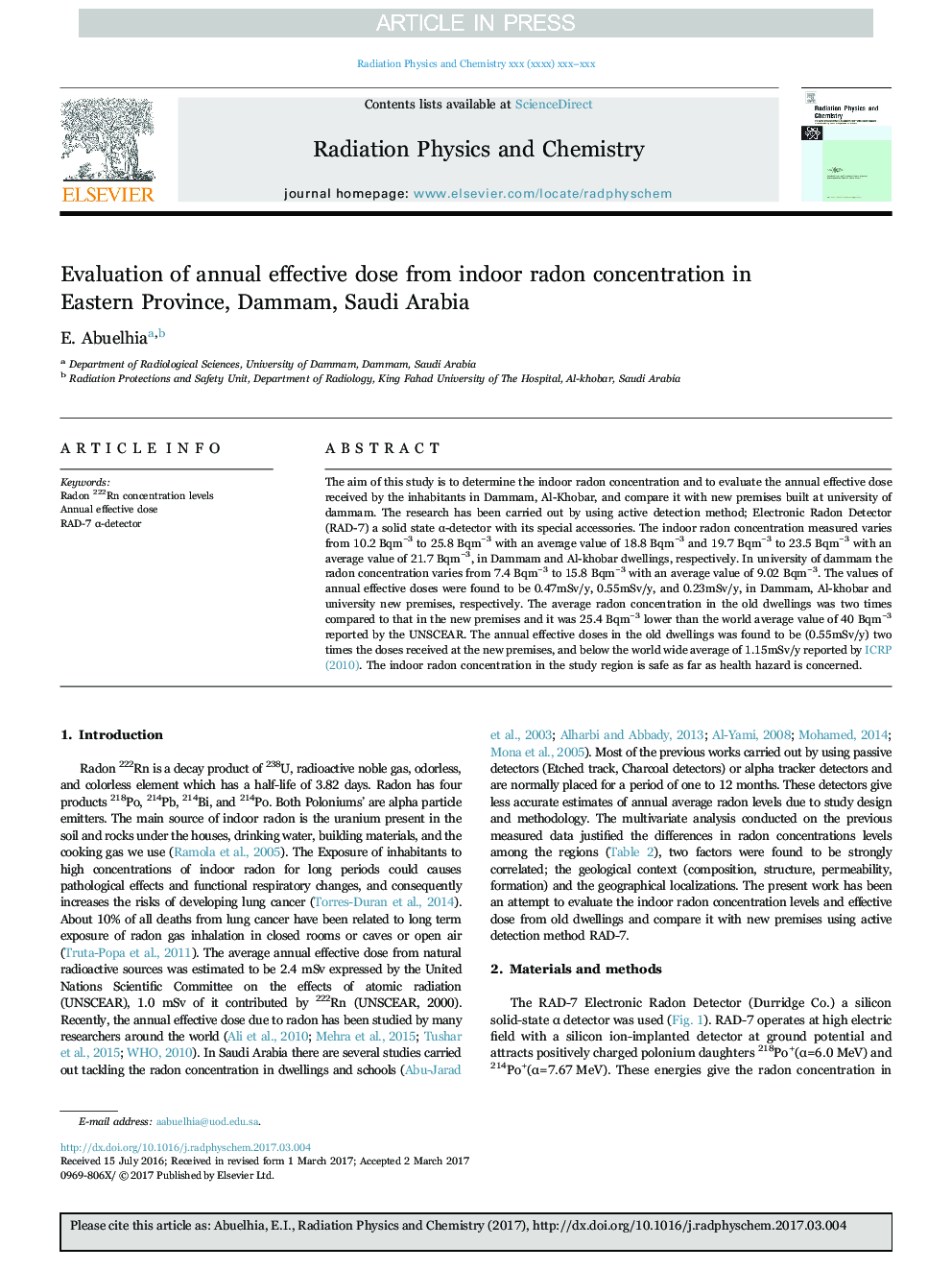| Article ID | Journal | Published Year | Pages | File Type |
|---|---|---|---|---|
| 5499068 | Radiation Physics and Chemistry | 2017 | 4 Pages |
Abstract
The aim of this study is to determine the indoor radon concentration and to evaluate the annual effective dose received by the inhabitants in Dammam, Al-Khobar, and compare it with new premises built at university of dammam. The research has been carried out by using active detection method; Electronic Radon Detector (RAD-7) a solid state α-detector with its special accessories. The indoor radon concentration measured varies from 10.2 Bqmâ3 to 25.8 Bqmâ3 with an average value of 18.8 Bqmâ3 and 19.7 Bqmâ3 to 23.5 Bqmâ3 with an average value of 21.7 Bqmâ3, in Dammam and Al-khobar dwellings, respectively. In university of dammam the radon concentration varies from 7.4 Bqmâ3 to 15.8 Bqmâ3 with an average value of 9.02 Bqmâ3. The values of annual effective doses were found to be 0.47mSv/y, 0.55mSv/y, and 0.23mSv/y, in Dammam, Al-khobar and university new premises, respectively. The average radon concentration in the old dwellings was two times compared to that in the new premises and it was 25.4 Bqmâ3 lower than the world average value of 40 Bqmâ3 reported by the UNSCEAR. The annual effective doses in the old dwellings was found to be (0.55mSv/y) two times the doses received at the new premises, and below the world wide average of 1.15mSv/y reported by ICRP (2010). The indoor radon concentration in the study region is safe as far as health hazard is concerned.
Keywords
Related Topics
Physical Sciences and Engineering
Physics and Astronomy
Radiation
Authors
E. Abuelhia,
